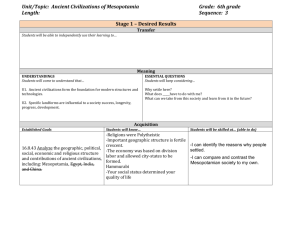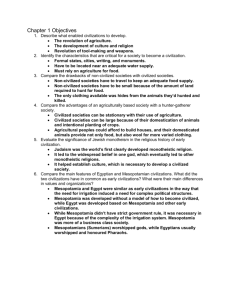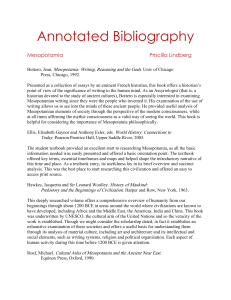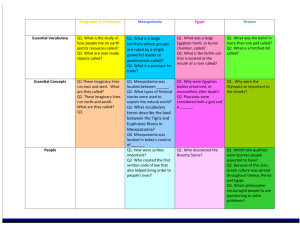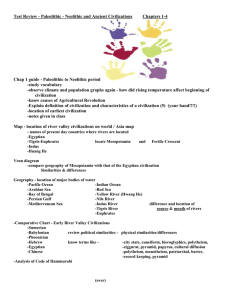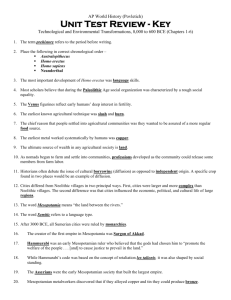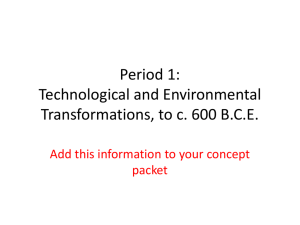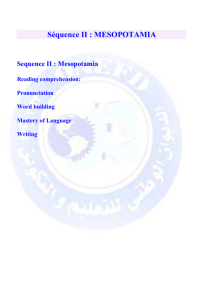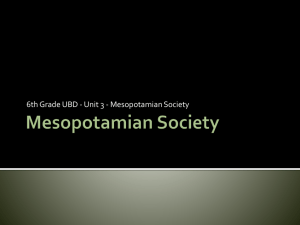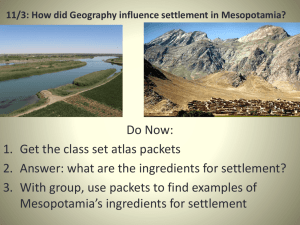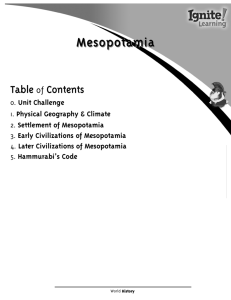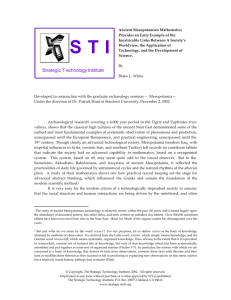Mesopotamia-Study-Guide.doc
advertisement
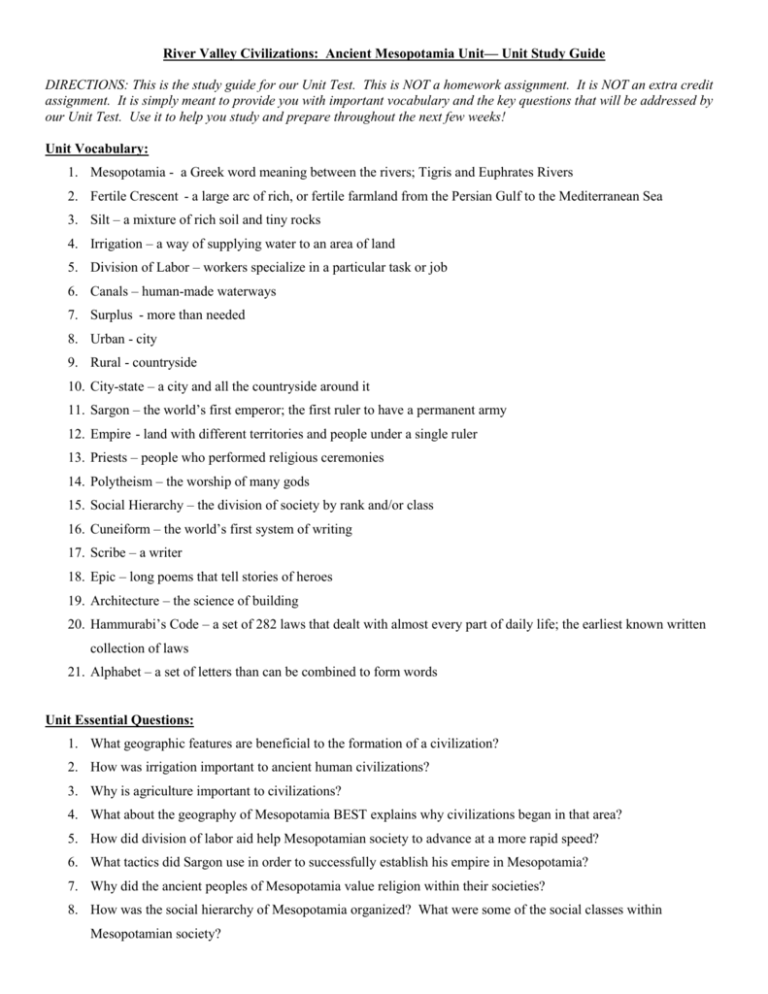
River Valley Civilizations: Ancient Mesopotamia Unit— Unit Study Guide DIRECTIONS: This is the study guide for our Unit Test. This is NOT a homework assignment. It is NOT an extra credit assignment. It is simply meant to provide you with important vocabulary and the key questions that will be addressed by our Unit Test. Use it to help you study and prepare throughout the next few weeks! Unit Vocabulary: 1. Mesopotamia - a Greek word meaning between the rivers; Tigris and Euphrates Rivers 2. Fertile Crescent - a large arc of rich, or fertile farmland from the Persian Gulf to the Mediterranean Sea 3. Silt – a mixture of rich soil and tiny rocks 4. Irrigation – a way of supplying water to an area of land 5. Division of Labor – workers specialize in a particular task or job 6. Canals – human-made waterways 7. Surplus - more than needed 8. Urban - city 9. Rural - countryside 10. City-state – a city and all the countryside around it 11. Sargon – the world’s first emperor; the first ruler to have a permanent army 12. Empire - land with different territories and people under a single ruler 13. Priests – people who performed religious ceremonies 14. Polytheism – the worship of many gods 15. Social Hierarchy – the division of society by rank and/or class 16. Cuneiform – the world’s first system of writing 17. Scribe – a writer 18. Epic – long poems that tell stories of heroes 19. Architecture – the science of building 20. Hammurabi’s Code – a set of 282 laws that dealt with almost every part of daily life; the earliest known written collection of laws 21. Alphabet – a set of letters than can be combined to form words Unit Essential Questions: 1. What geographic features are beneficial to the formation of a civilization? 2. How was irrigation important to ancient human civilizations? 3. Why is agriculture important to civilizations? 4. What about the geography of Mesopotamia BEST explains why civilizations began in that area? 5. How did division of labor aid help Mesopotamian society to advance at a more rapid speed? 6. What tactics did Sargon use in order to successfully establish his empire in Mesopotamia? 7. Why did the ancient peoples of Mesopotamia value religion within their societies? 8. How was the social hierarchy of Mesopotamia organized? What were some of the social classes within Mesopotamian society? 9. Identify examples of Mesopotamian inventions that would have allowed them to increase and be more successful at trading with other cultures. 10. Identify examples of Mesopotamian inventions that would have aided them in improving their agricultural production. 11. Why was Hammurabi’s Code important to the development of government within human societies? 12. What geographic features allowed Phoenicia to become a powerful trading society? Unit Geography: You must be able to identify the following locations/geographic features on a world map. 1. North America 2. South America 3. Europe 4. Africa 5. Asia 6. Australia 7. Antarctica 8. Atlantic Ocean 9. Pacific Ocean 10. Indian Ocean 11. Arctic Ocean 12. Southern Ocean 13. Gulf of Mexico 14. Caribbean Sea 15. Rocky Mountains 16. Andes Mountains 17. Appalachian Mountains 18. Amazon River 19. Mississippi River 20. Tigris River 22. Persian Gulf 23. Mesopotamia 21. Euphrates River Absolute Location: For the test, you must be able to identify the coordinates of various spots around the world. Practice for the test using the absolute location sheet that is in your notebook! Review Vocabulary: These vocabulary words were not part of this unit of study but were part of previous units of study. Questions on these vocabulary terms will appear on your next test. 1. Geography 2. History 3. Archaeology 7. Secondary Source 8. Culture 13. Anthropology 14. Government 18. Traditional Economy 9. Values 5. Artifacts 10. Anthropology 15. Monarchy 19. Command Economy 22. Hunter-Gatherer Society 23. Nomadic 4. Fossil 16. Anarchy 20. Market Economy 24. Domestication 6. Primary Source 11. Culture 12. Values 17. Economic System 21. Mixed Economy 25. Civilization 26. Agriculture Review Essential Questions: These questions were not part of this unit of study but were part of previous units of study. These questions will appear on your next test. 1. What geographic features are beneficial to the formation of a civilization? 2. How did the creation of agriculture and domestication change human societies? 3. Provide examples of artifacts. Provide examples of fossils. 4. Provide examples of primary sources. Provide examples of secondary sources. 5. In what ways are agricultural societies different from hunter-gatherer societies? 6. Why do people create governments to rule themselves? 7. Describe an example of a society with a command economy. Describe an example of a society with a market economy.
